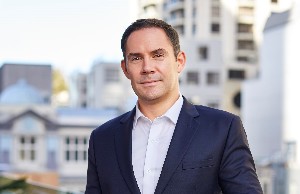
David Fyfe
There has been a lot of public and media interest lately on the topic of responsible investing, along with some provider puffery about what they are doing for investors in this area.
We asked David Fyfe (Mint’s Portfolio Manager) to help demystify what it all means for investment advisers, their clients and explain why we think it’s an incredibly important contribution to active fund managers' returns.
David, before we get started tell us a little bit about yourself, what your role at Mint is and what you get up to out of work hours?
At Mint, I manage our NZ Socially Responsible Investment Equity Fund in addition to research coverage for the primary, telecommunications, technology and transport sectors.
Before my time at Mint, I spent five years in London working for both Pantheon Ventures (private equity) and Lloyds Bank (derivatives project) and before that at BT Funds Management in NZ also researching NZX-listed stocks.
Outside of work, life revolves largely around our new daughter as well as getting out for the occasional run in the sun.
ESG, SRI, green investing are all labels that we hear being used; do they all mean the same?
The investment industry is certainly not shy of jargon and acronym-filled commentary. Starting with SRI (or socially responsible investing), this is the practice of investing funds in ways that support positive social impacts (waste reduction, safety practices, etc.), while at the same time attempting to steer clear or minimise exposure to less desirable social issues (pollution, child labour, etc).
When considering what fits within an acceptable investment framework of "socially responsible investments", the three key pillars to consider are environmental, social and governance or simply "ESG" as it’s commonly referred to.
The considerations for each category are not limited to but include as examples:
- Environmental: waste and pollution, greenhouse gas emissions/carbon footprint, supply chain impact
- Social: employee/industrial relations, safety and privacy practices, community engagement
- Governance: board diversity and composition, independence and tenor, executive remuneration
Effectively, ESG factors are the nuts and bolts that when put together can provide a piece of the puzzle when assessing each investment opportunity.
At Mint, we undertake detailed research into each of our investment opportunities and holdings. This includes looking at ESG factors and understanding how these relate to long-term outcomes both from a financial sense but also societal.
ESG scores are formulated by all of our sector analysts (including myself) from our own bespoke scoring of key attributes within the E, S and G categories. This then links into our stock selection process for each portfolio manager.
How can ESG principles be applied to the investment process and what are the factors that we look at when looking to invest in companies?
ESG factors, as touched on earlier, are the building blocks of our analysis when considering non-financial investment metrics.
The reason we consider such factors to be important, is that they help give a better understanding of what risks a company has considered when it undertakes both its daily operations and also when making business decisions.
We feel that companies that have strong policies in place around ESG will, in the long term, be better at mitigating risk than those that do not.
In our investment process, across all our portfolios, we start with our exclusion list. These are sectors that we consider off limits for investment, largely seen as harmful to people and the environment and so on.
Currently this includes manufacture and production of tobacco, armaments, pornography and uranium enrichment.
Once we have worked our way through our negative screening (exclusion list) we then look to include stocks into our portfolios that score higher on ESG factors with all else being equal.
Alternatively, we can reduce our holdings in companies that score poorly, or fail to live up to our ESG expectations – effectively vote with our feet.
This is an important feature of our approach as an active manager. We can sell down our holdings in companies where we have lost conviction.
No matter how much noise passive managers make about their responsible investing credentials, they are committed to owning the companies in the index they have chosen to mirror.
Any change to the constituents of an index are made by the index provider, not the fund manager. This means passive managers are at the mercy of the index providers, irrespective of their ESG views, for their allocation.
Greenwashing and green sheen seem to be a topic of conversation these days; what is that all about?
Greenwashing, and like terms, are often thrown around by companies and funds in an attempt to stamp on them a "green" label. We have seen examples of this from ExxonMobil’s claim around greenhouse gas emissions reductions, when in fact they were actually rising.
In addition, it is common for companies to claim "green" attributes when in fact they have outsourced the nasty part of the supply chain to another company, merely playing musical chairs with the outcomes.
With some investment funds, we often see a simple negative screen (exclusion list) used in isolation to remove a couple of stocks and label a fund "green".
While this does provide an improvement, from our perspective it misses the key ESG engagement with management/boards both on positive and negative attributes within a sector/industry. Hence, we at Mint feel having too many blanket exclusions removes the ability to engage with and see change across companies, and effectively ignores the problem or leaves it for the next person.
As continued adoption of ESG factors and socially responsible investing takes hold, which we believe it will, more standardised measures and benchmarking of such claims will continue to improve to give investors more transparency and understanding of both underlying companies and exposures within investment funds. This leads investment managers like Mint to support organisations such as UNPRI for a structured framework for ESG.
Mint is a signatory of UNPRI and has an A+/A rating for 2019; what does that mean and why do we think it’s important?
Mint is a signatory to the “Principles for Responsible Investment” established by the United Nations (UNPRI) which aims to provide a consistent framework for reviewing business practices across industries and companies.
The Principles centre on a voluntary commitment to incorporating ESG issues into investment analysis while promoting the implementation and disclosure of these within the investment industry.
The Principles were developed by a group of international institutional investors, reflecting the increasing relevance to investment practices.
Adherence to the principles requires an annual audit of Mint’s ESG investment process framework and is becoming more rigorous each year as the process evolves over time. Mint has been involved with the UNPRI for three years now and has achieved an A or A+ rating every year.
Why we think this is important, is that we believe that investing in companies that incorporate ESG measures into their business can affect the performance of portfolios positively and having an external review of our process reinforces our confidence in our approach.
Do you think ESG factors are going to become more important to investors and ultimately will more companies integrate these factors in their day-to-day business objectives?
ESG factors and their influence will continue to evolve. Companies are largely aware of the mounting focus from the public and investors on ESG and how they can influence investment decisions.
Engagement between companies and investment managers, like ourselves, is a key starting point to address what information we require when scoring companies, and also what measures they can provide so we can see how companies track along the ESG pathways they put in place.
We are seeing adoption of ESG-focused reporting with improved disclosure including diversity of work forces, greenhouse gas emissions throughout the supply chain, to detailed health and safety reporting.
These disclosures are slowly becoming an industry norm within annual reports and from a New Zealand perspective we are seeing the companies at the larger, better-resourced, end of town adopt this more readily.
The use of third-party ESG research providers has increased the information collected and provides detailed analysis across global peers that provides insight back to how the NZ listed companies compare globally.
We at Mint use Sustainalytics as a third-party ESG provider, this provides us with global benchmarking for local firms as well as another perspective to run alongside our own internal ESG scoring as often global platforms won’t cover all issues relevant to NZ investors and even all the locally listed names themselves.
Innovation in the sector is beginning to occur with an example of an ESG product seen with Synlait entering into an ESG-linked loan with ANZ. While unique, we would expect to see more ESG-linked instruments, and management incentive structures that align companies to these factors.
ESG factors are here to stay and the quicker we as fund managers and listed companies move to adopt them then the higher the expected outcomes for investors and society.



Comments
No comments yet.
Sign In to add your comment